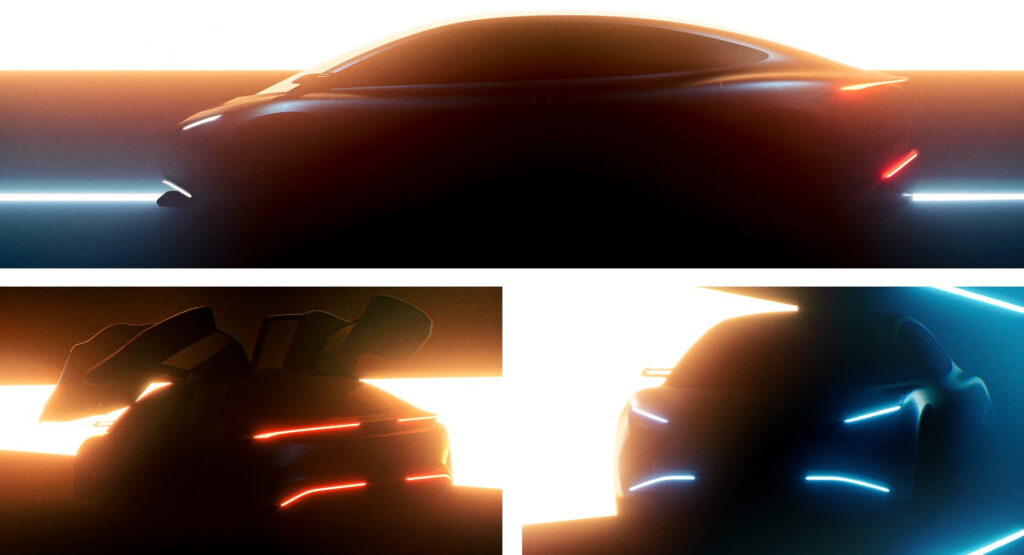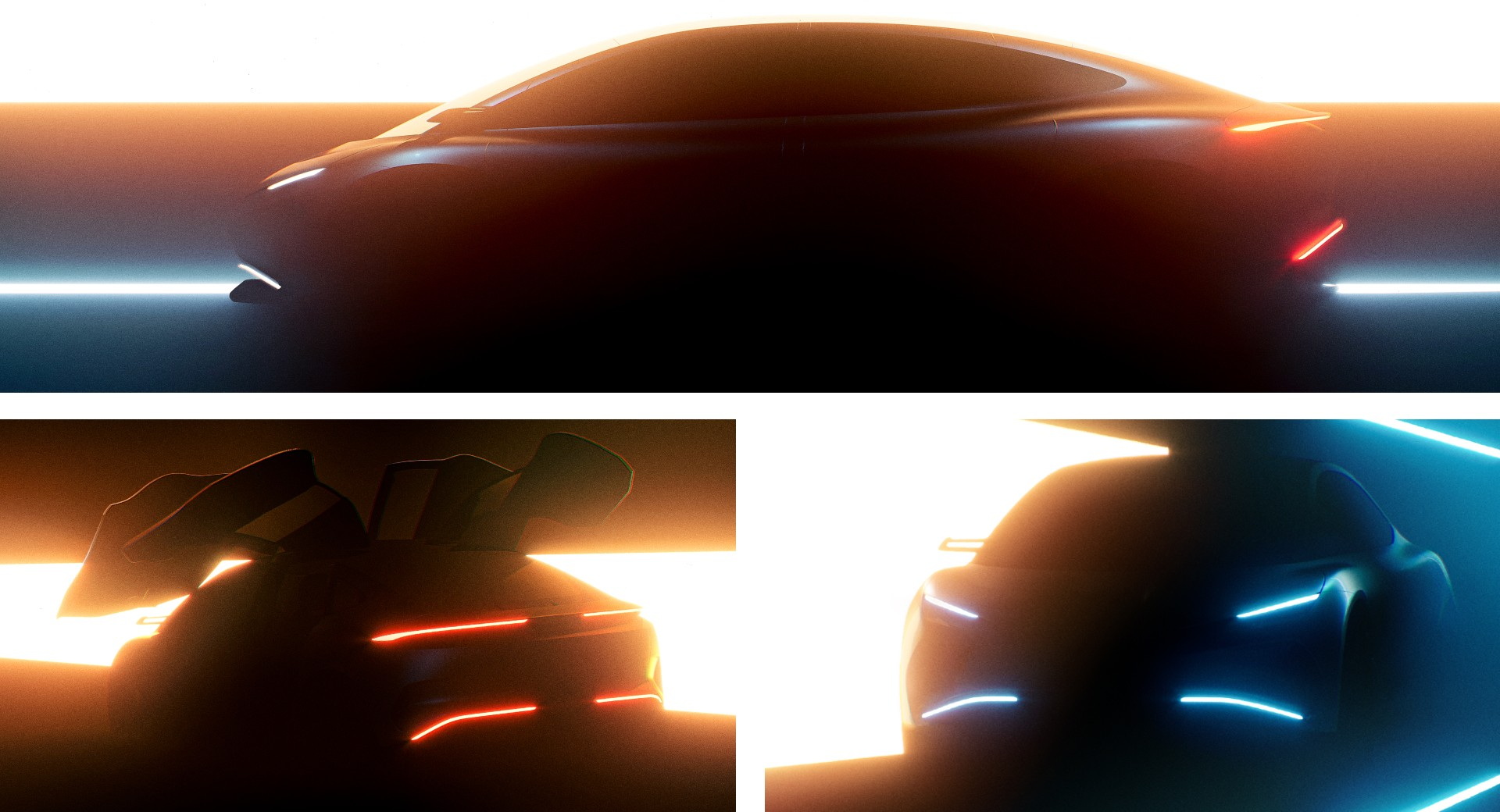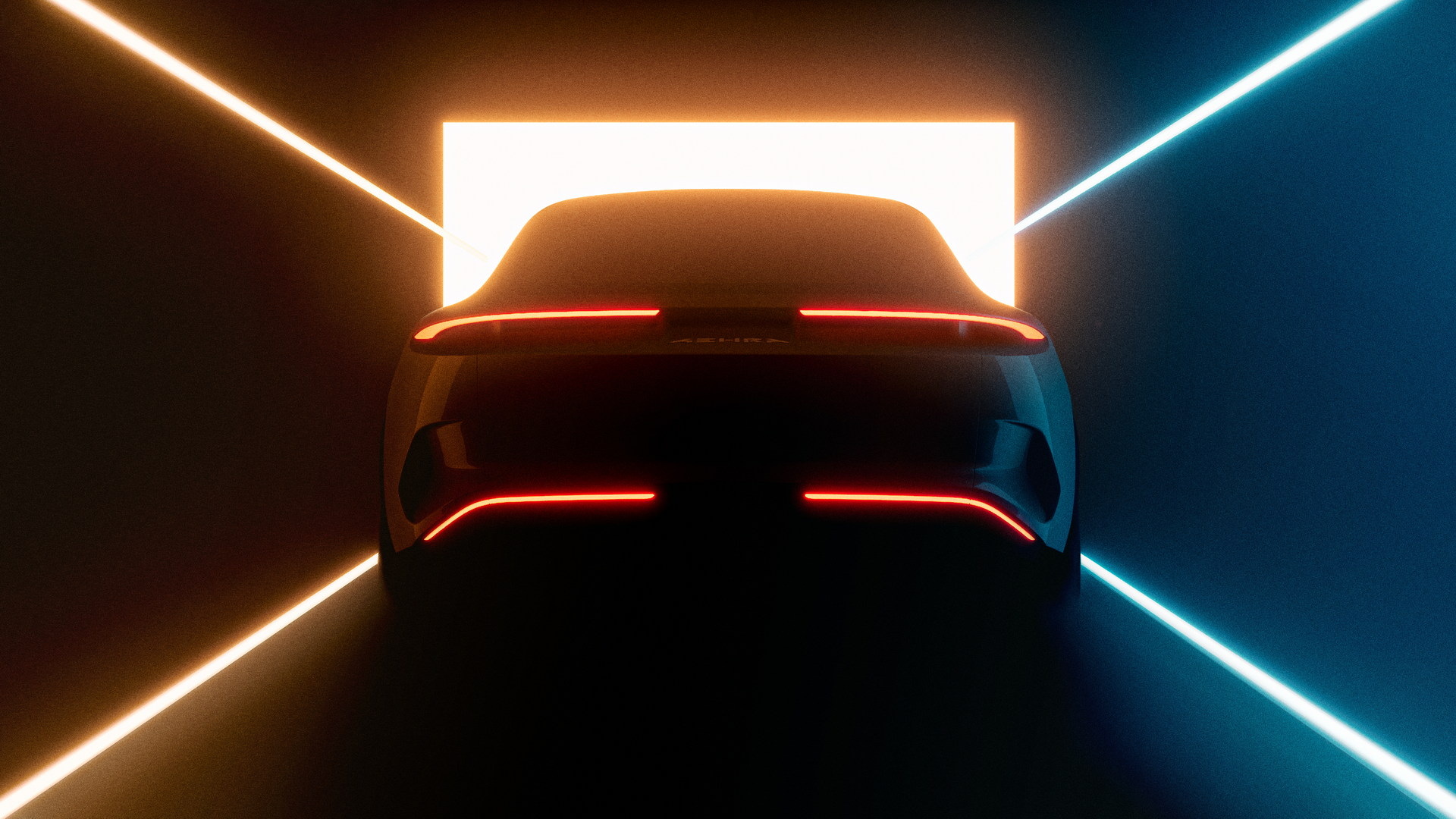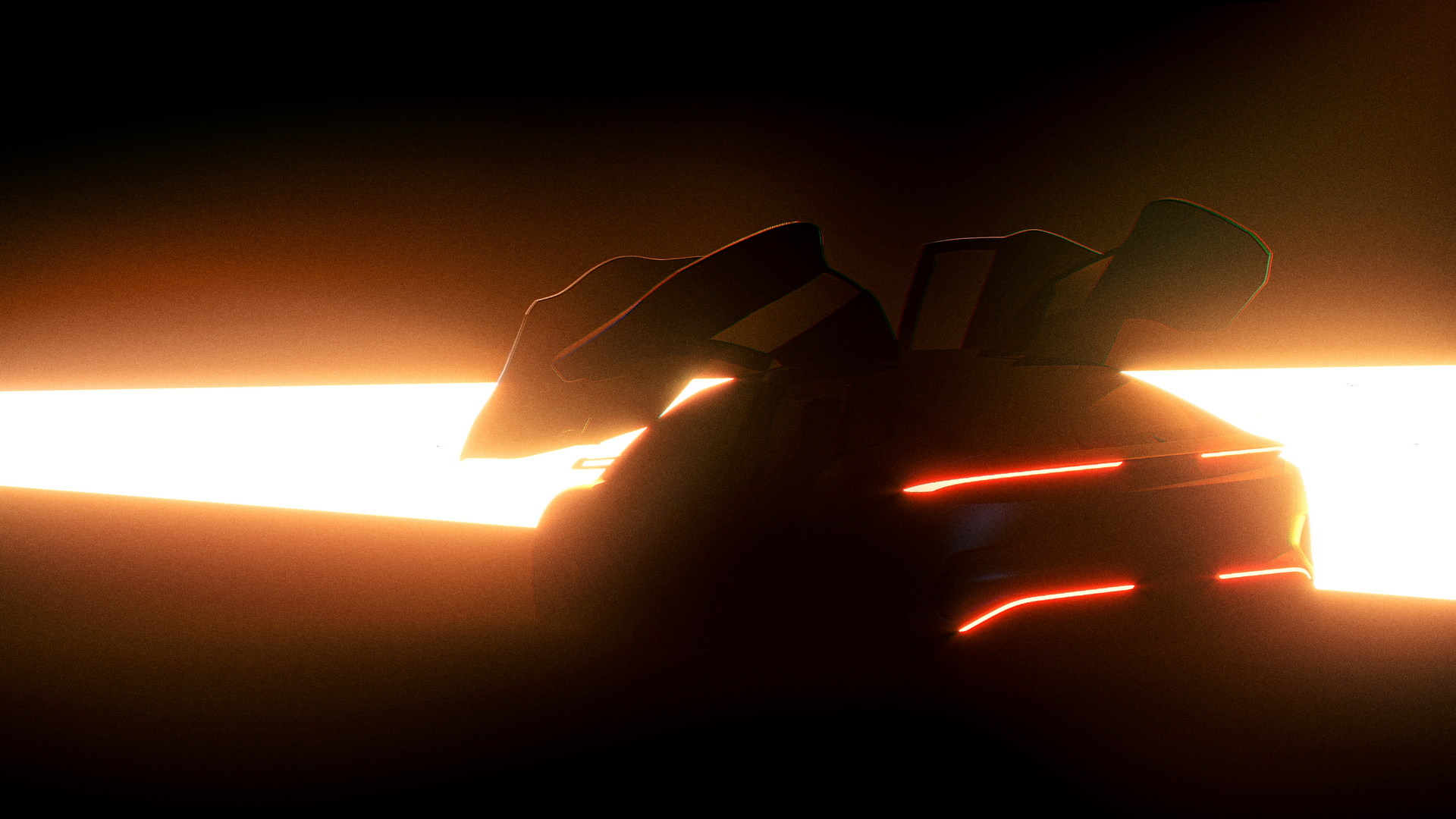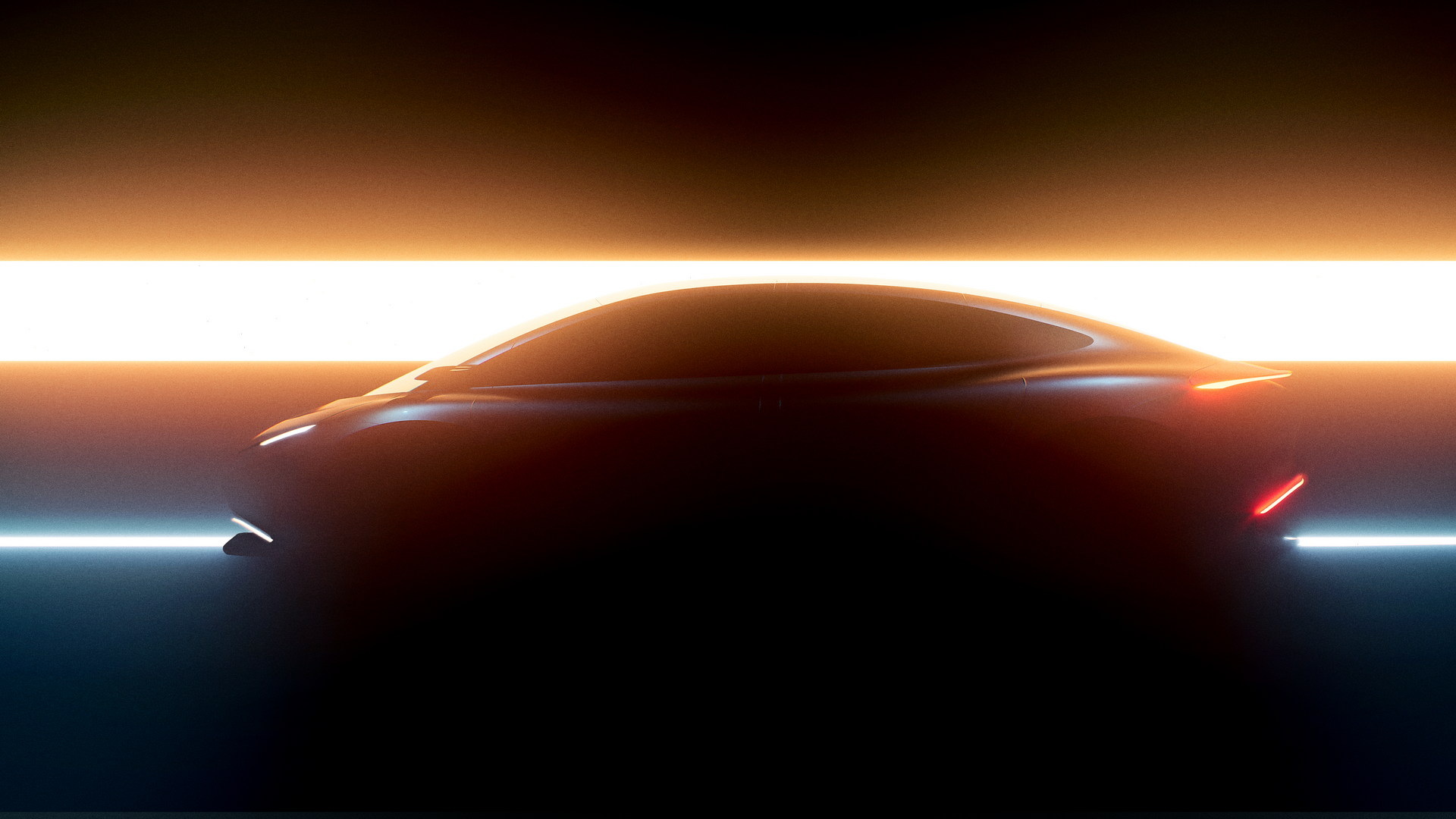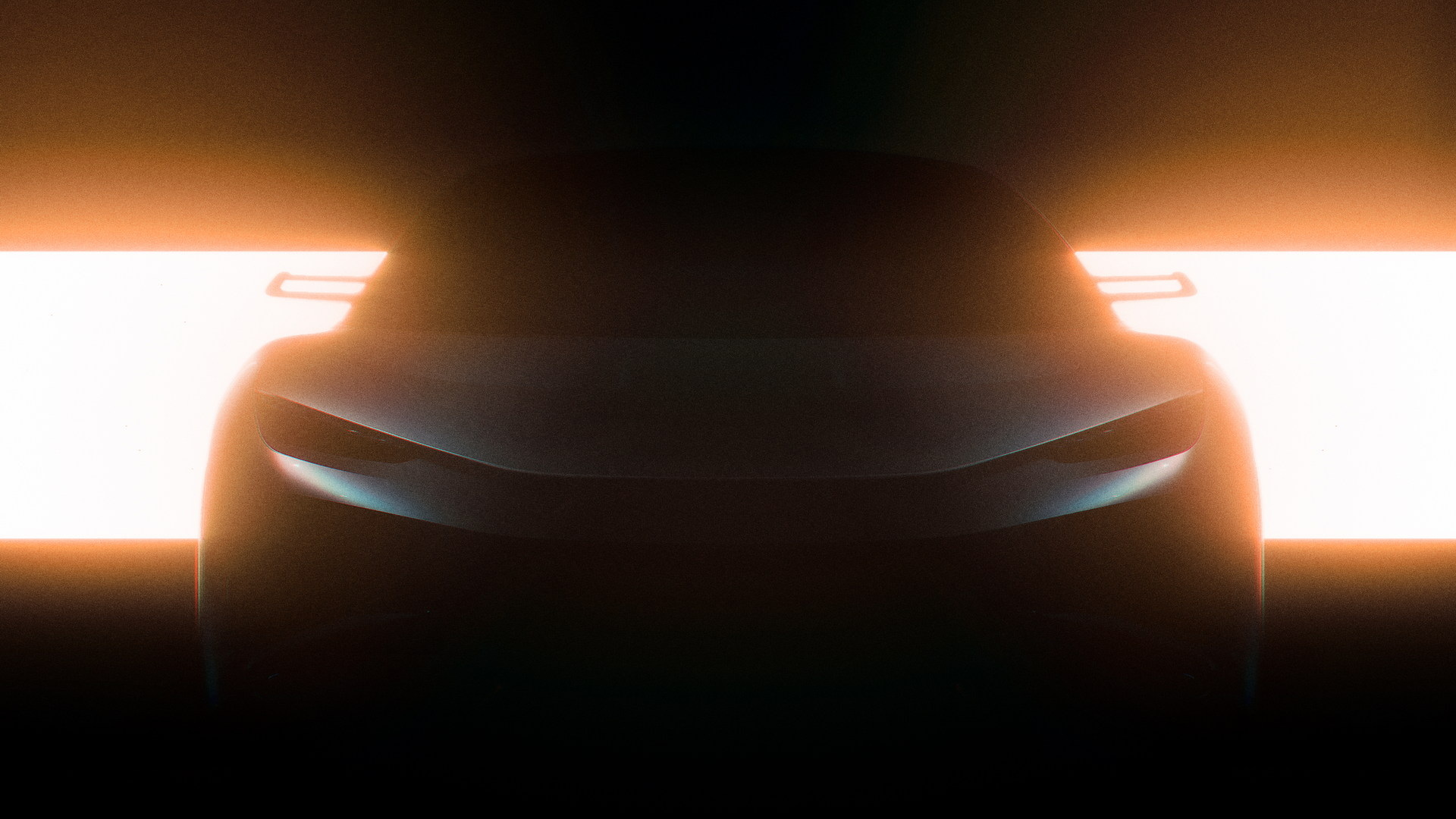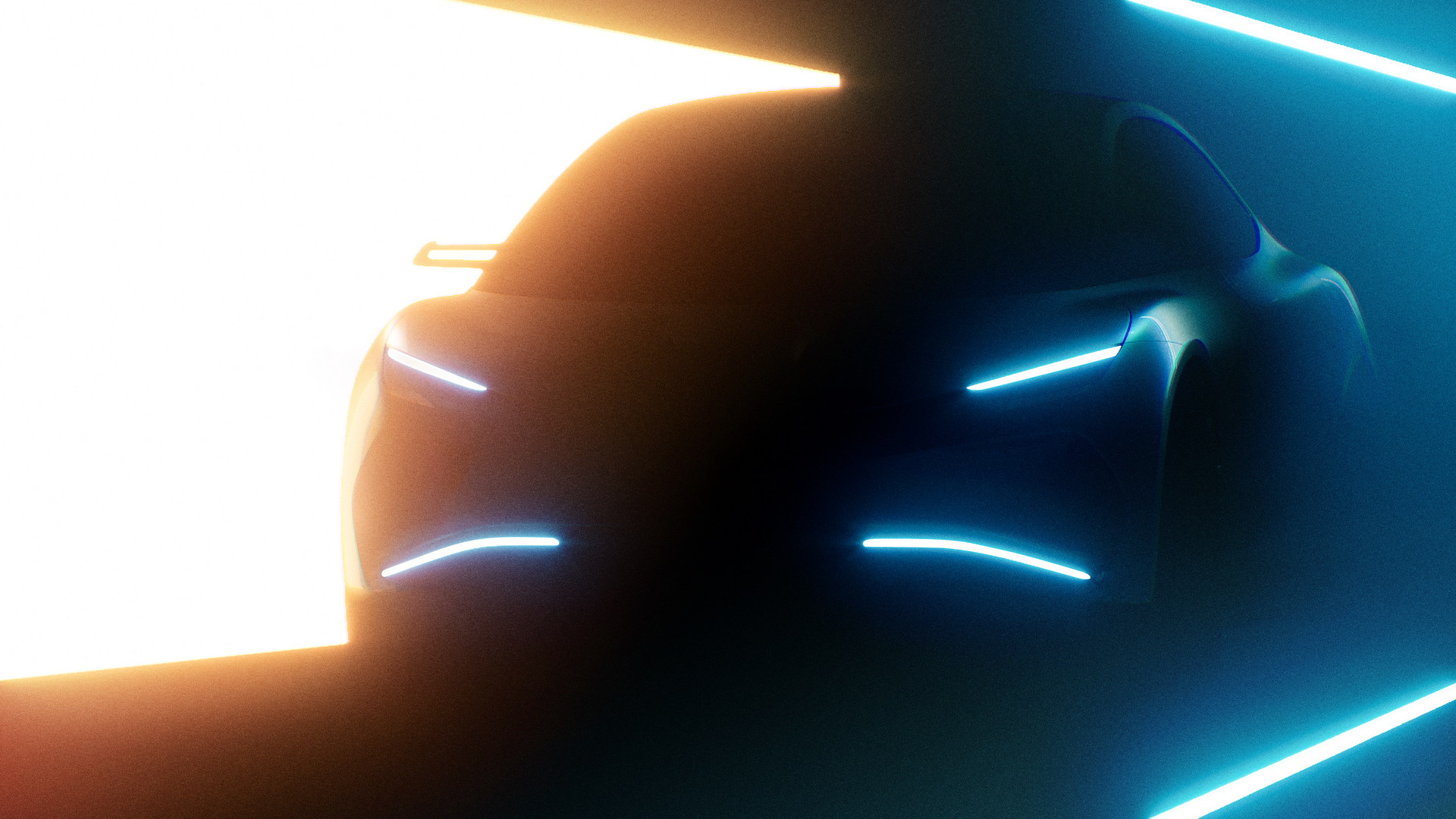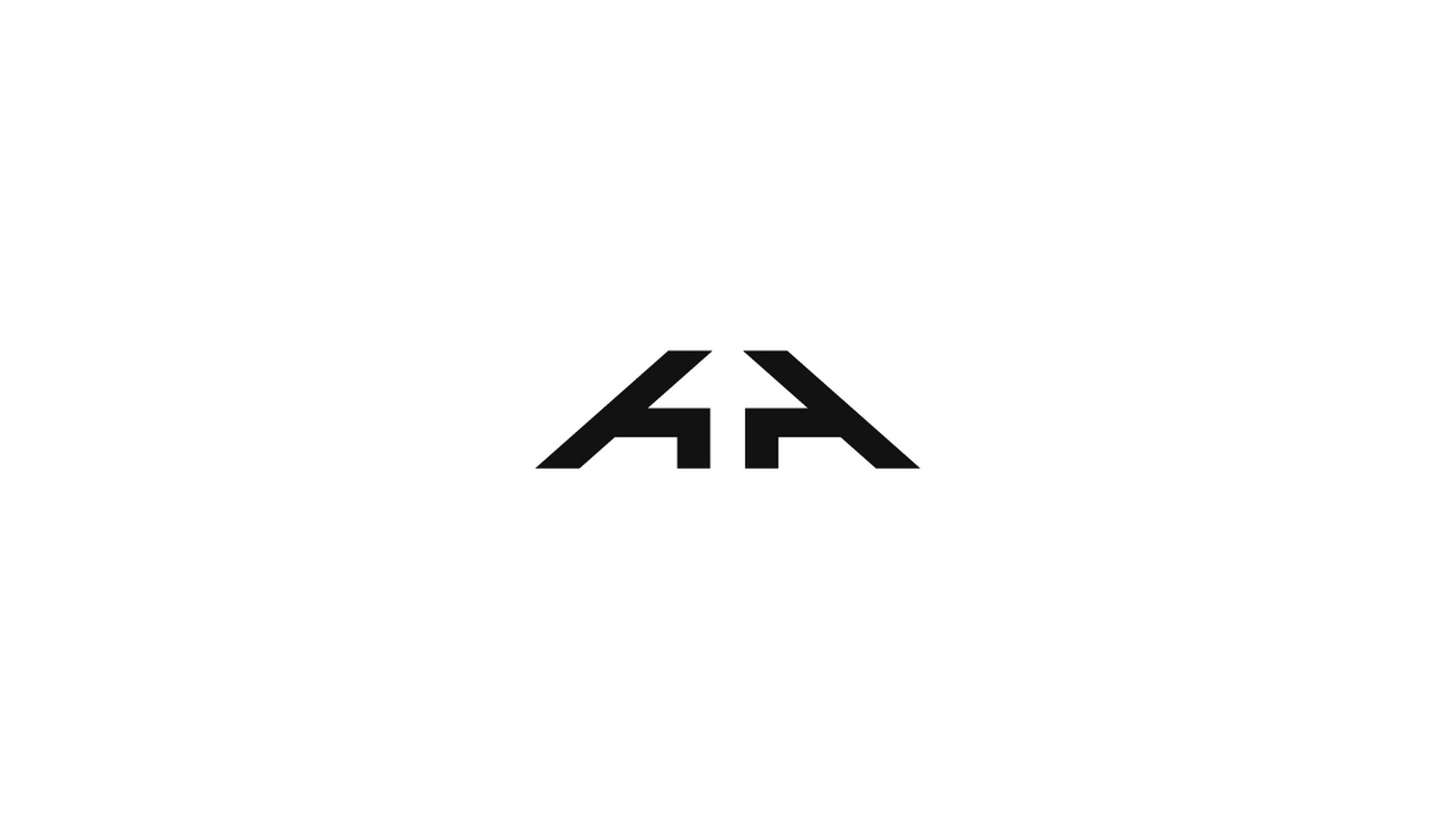AEHRA, a Milan-based startup aiming to become an “ultra-premium car and EV mobility brand”, revealed a series of teaser images of its first production model. The yet-unnamed SUV with an aerodynamic shape will be unveiled in October 2022, followed by a sedan in February 2023, with both models scheduled for production in 2025.
The shadowy teasers reveal rather unusual proportions for an SUV, with a short bonnet, a sculpted body, a coupe-style greenhouse, and a sleek roofline. The lighting signature at the front and at the back is characterized by quad slim LED graphics. The highlight of the vehicle is the four upwards-swinging gullwing-style doors, giving it an exotic stance.
Responsible for the styling of AEHRA models is Filippo Perini, who has worked as a designer for Lamborghini and Genesis. Perini said that AEHRA’s vision is “to unlock the full design potential afforded by cutting-edge EV platform technology in a manner not previously seen”. This is supposed to be the point of differentiation of the new brand against established rivals like Porsche, BMW, and Mercedes-Benz. The clever packaging will also allow a great deal of interior space which in the case of the SUV will be enough to accommodate four NBA players and an extra six-foot adult.
Both the SUV and the sedan will be based on a carbon-fiber monocoque chassis sourced from an unnamed supplier. They will also be equipped with cutting-edge battery tech offering a range of at least 497 miles (800 km). Powerful electric motors will deliver “awe-inspiring” levels of performance, and the chassis setup will result in sharp driving dynamics.
Hazim Nada, AEHRA’s co-founder, Chairman, and CEO, confirmed they will reveal the full design and name of the SUV in October. Speaking to Auto Express, he revealed pricing between $160,000 and $180,000 for their first model. AEHRA is targeting a 2025 market launch, eyeing a gradual roll-out in North America, Europe, UK, China, and the Gulf States. As reported by Top Gear, the company hopes to have sold more than 15,000 SUVs and 15,000 sedans after the first year of production.




